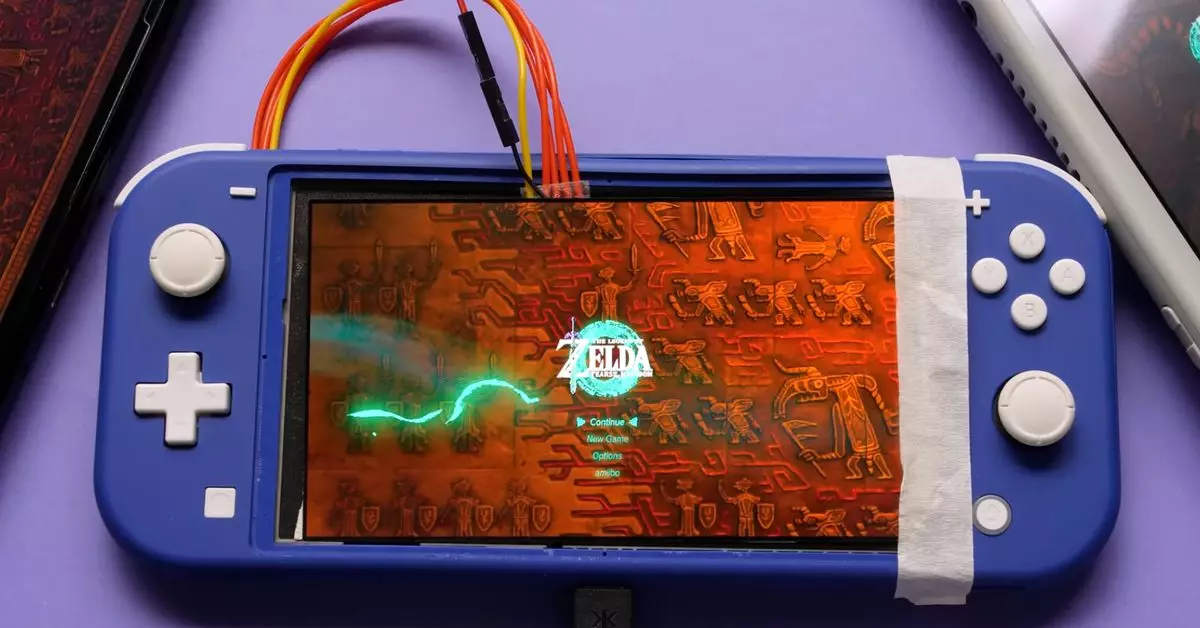The gaming landscape is constantly evolving, with companies innovating to meet the demands of consumers. Retro Remake has recently stolen the limelight by unveiling its new upgrade kits for the Nintendo Switch Lite, set for release on September 26th. With these kits, the company aims to enhance the handheld gaming experience substantially. This article explores the details of these products, the technical aspects involved, and the potential impact on consumers looking for a superior gaming experience.
At the heart of Retro Remake’s ambition lies the introduction of OLED screen upgrade kits. Priced starting at a competitive $49.99, these Super5 OLED kits offer an array of components that empower users to transform their Switch Lite display. Unlike traditional modding processes which often require advanced technical skills like soldering, these kits promise a user-friendly installation that appeals to novices and seasoned gamers alike. The inclusion of tools such as screwdrivers simplifies the DIY process, allowing individuals to undertake the upgrade without fear of damaging their device.
Nonetheless, potential buyers should be mindful of the limitations associated with the entry-level kit. The standard kit, priced at $49.99, forgoes touchscreen capabilities, thereby restricting gameplay for titles that rely heavily on touch inputs. Gamers hoping to enjoy experiences such as “Super Mario Maker 2” might find this a frustrating limitation. For those unwilling to compromise on functionality, Retro Remake offers an upgraded version at $64.99, incorporating a touchscreen for a more robust gaming experience.
An exciting option for users is the $84.99 kit that combines the touchscreen with a remarkable 1080p video output through the Switch Lite’s USB-C port. This feature alone encapsulates the tremendous upgrades Retro Remake is promising, bringing capabilities that Nintendo didn’t initially include in their compact model. Such enhancements illustrate an aggressive push from third-party manufacturers to fill gaps in the existing console market, delivering features that enthusiasts have long sought.
While the upgrade process appears relatively straightforward—thanks to the absence of soldering—it’s crucial to understand that the user must still open the device and extract original components. This aspect could deter some users who aren’t entirely comfortable with modifying their consoles. For those hesitant about the installation process, the Mega Kit at $109.99, which offers a preinstalled OLED touchscreen and HDMI output in a third-party shell, provides a more accessible alternative, requiring only the migration of internal components.
Retro Remake claims that the OLED technology incorporated in their kits boasts brighter, more vibrant displays than those found in the original Nintendo Switch OLED model. With improved contrast and a wider color gamut, these upgrades promise an enriched visual experience, making games more immersive. This claim is particularly enticing for gamers who prioritize display quality and want their handheld gaming to rival that of bigger consoles.
However, potential buyers should approach with cautious optimism. Many emerging hardware providers can struggle to deliver on high expectations, so Retro Remake’s past performance becomes a significant point of interest. They have successfully shipped previous products, such as their “MiSTer Pi” clones, enhancing their credibility in the competitive electronics market. This previous experience offers some reassurance to consumers contemplating investment in their upgraded kits.
Retro Remake’s OLED upgrade kits for the Switch Lite present a compelling opportunity for gaming enthusiasts aiming to elevate their handheld experience. The combination of innovative technology, flexible pricing, and straightforward installation caters to a diverse consumer base. As frequently seen in the gaming industry, the emergence of such products underscores the shift toward customization and personalization, satisfying users’ desire for unique gaming experiences. While hesitancy regarding a newer company’s offerings is understandable, the potential for transformative upgrades makes these kits worth considering as gamers look to enhance their handheld devices.


Leave a Reply